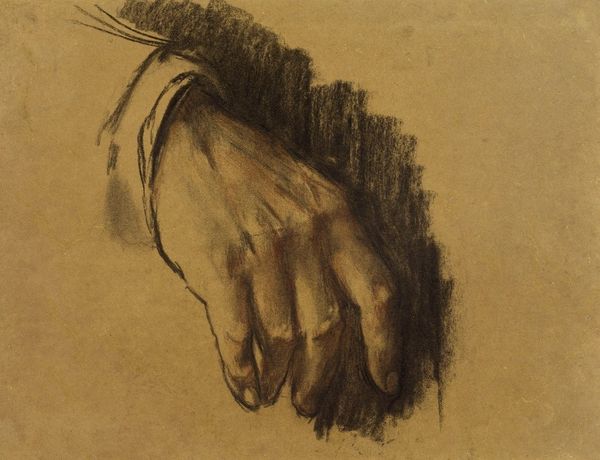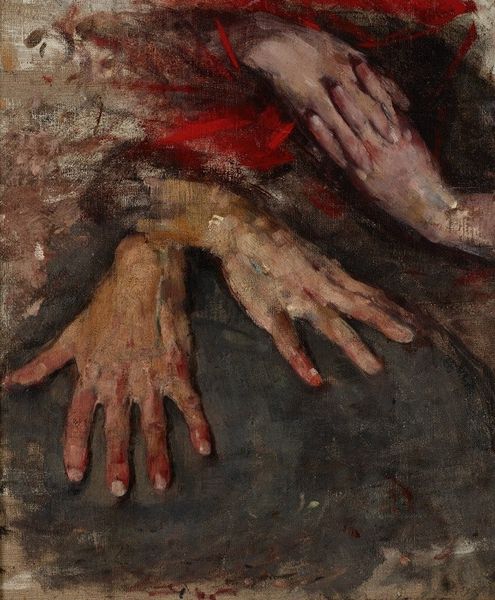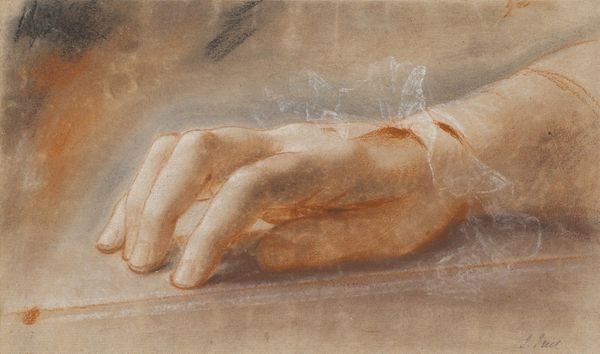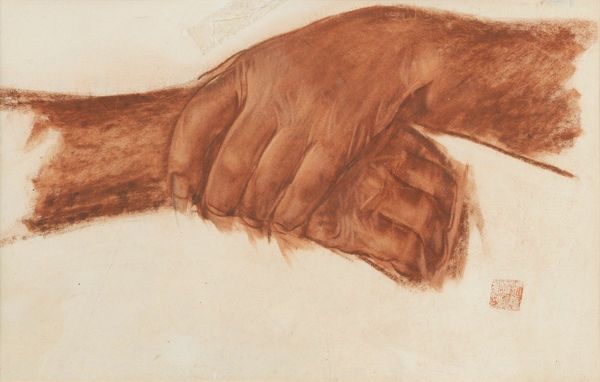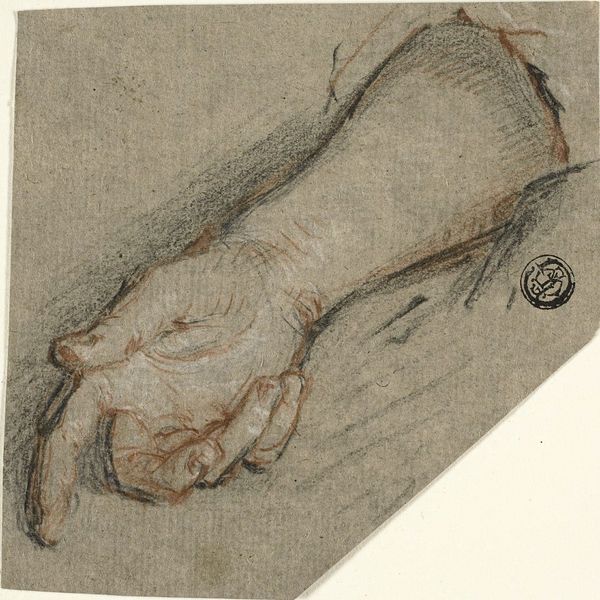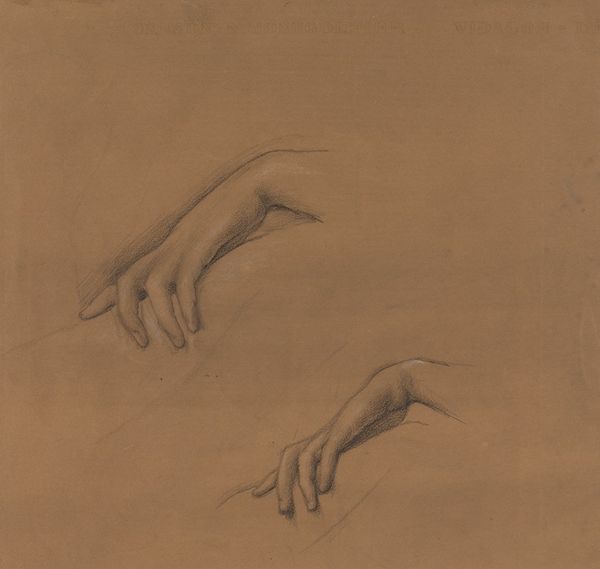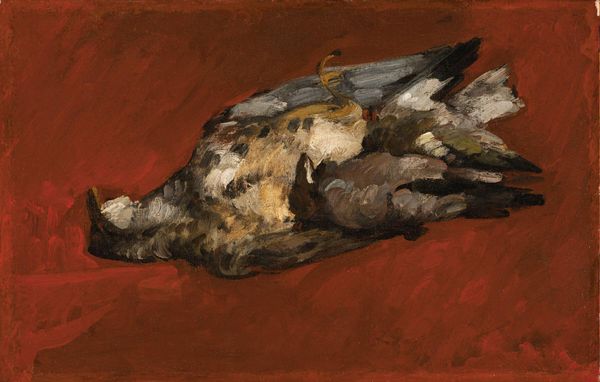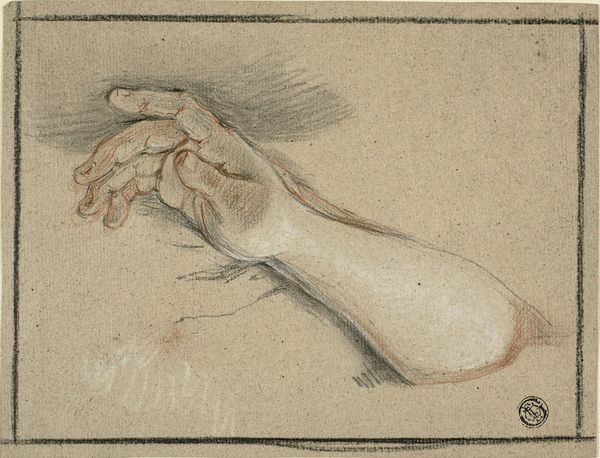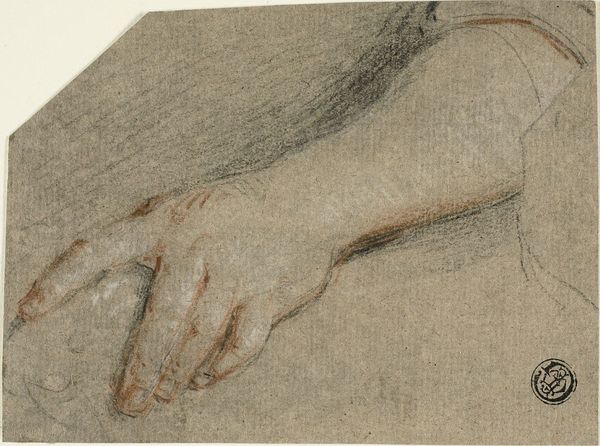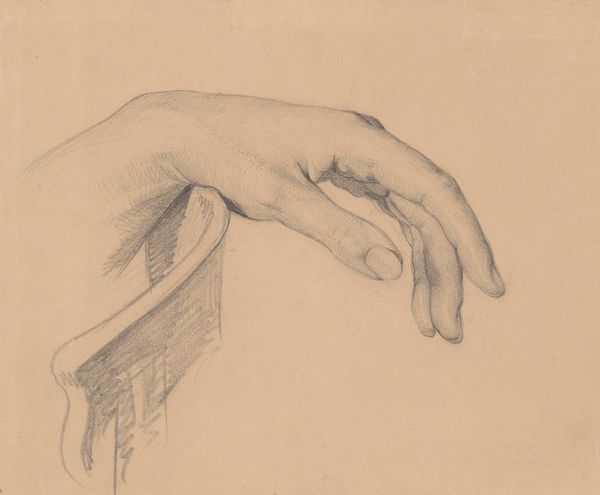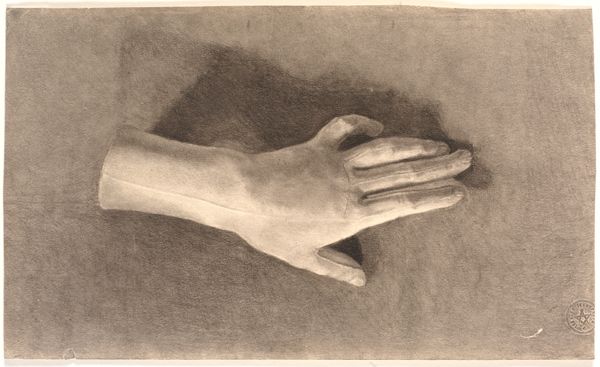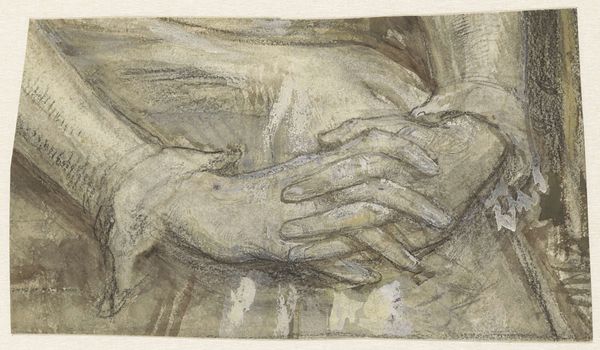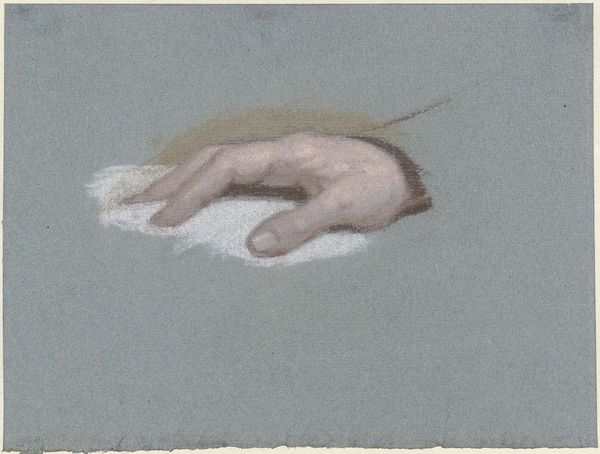
Study of the hands of Sigismund Augustus for the painting “Death of Barbara Radziwiłł” c. 1860
0:00
0:00
oil-paint
#
portrait
#
oil-paint
#
oil painting
#
realism
Copyright: Public Domain: Artvee
Curator: Here we have Józef Simmler’s “Study of the hands of Sigismund Augustus for the painting ‘Death of Barbara Radziwiłł,’” created around 1860, rendered in oil paint. Editor: Whoa, look at those hands. So much tension there, almost wringing, even though they appear still. The stark contrast in colour too, really brings them forward. Gives me the chills a little, actually. What's the story here? Curator: Well, Simmler was preparing for a large history painting, a very public genre at the time. Sigismund Augustus, a Polish king, is mourning his wife, Barbara Radziwiłł. These hands, while a small part, are meant to convey deep grief. Public mourning, really. Editor: History painting, got it. You know, it’s interesting how much emotion he packs into just hands. Almost sculptural. They feel so… present, y'know? Like I can feel his grief. Did most people feel such grand public mourning was genuine, back then? Curator: That’s always the tricky thing with these very staged displays of emotion in art, isn't it? There was always this awareness of political function. Polish nationalism, Romanticism—it’s all wrapped together. But I think Simmler walks the line. He invites you in, yet holds back some secret sorrow. Editor: Yes. I think there is this tension—the public versus the private grief of a ruler… the contrast of his delicate hands, the position... the clear mastery with which they're made versus his apparent emotional turmoil creates such an interesting pull! Curator: Absolutely. That dynamic plays such a significant part in not only the grander Death of Barbara Radziwiłł painting, but exists very clearly, too, even in this smaller study, it is as compelling as a standalone work in my opinion. It’s all quite impressive! Editor: A powerful demonstration of restrained emotion... this truly speaks of how private feeling might get sculpted to fit into public performance... fascinating! Thanks.
Comments
No comments
Be the first to comment and join the conversation on the ultimate creative platform.
